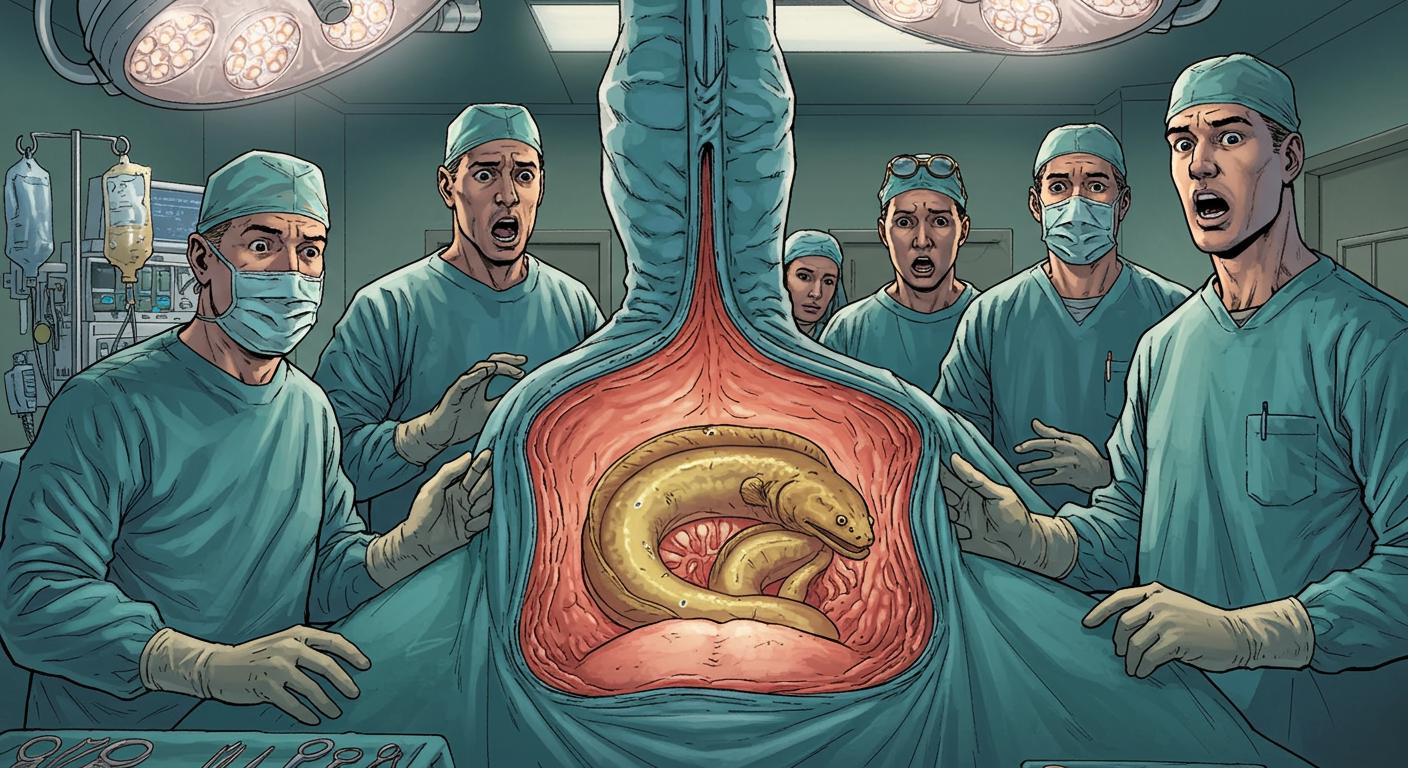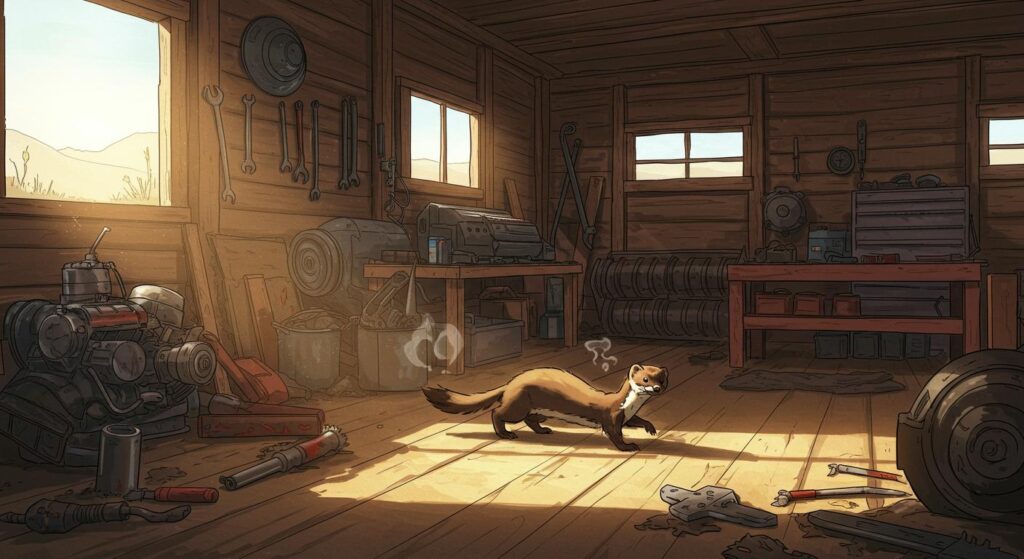There are some headlines that should, by all rights, only exist in the imagination of medical textbook writers or as cautionary tales whispered among ER staff after midnight. The story of a live 30-centimeter swamp eel—very much alive and writhing—in a patient’s abdominal cavity is, unfortunately (or perhaps inevitably), one such headline, and one very real day for doctors in Huaihua, China. While both OddityCentral and MustShareNews have recounted this unlikely encounter, the tale manages to be every bit as bewildering as those titles promise.
“Board-like” Abdomens and Boardroom Decisions
As described in both outlets, the patient—a 30-year-old man who arrived alone in obvious distress—showed up at the First Affiliated Hospital of Hunan University of Medicine on July 1st, clutching his abdomen and sporting a pallor rarely seen outside Victorian literature or hospital waiting rooms. MustShareNews reports that a CT scan then revealed a scene not typically found in the textbooks: a live swamp eel, known scientifically as Monopterus albus, which had entered via the rectum before burrowing through the sigmoid colon and into the open spaces of the abdominal cavity.
Doctors noted classic signs of severe peritonitis, describing the patient’s abdomen as “board-like,” a term that’s as reassuring as it sounds. OddityCentral highlights that the internal injuries prompted a rapid response, as diffuse peritonitis can escalate swiftly to septic shock if not managed. To further complicate the situation, the man had apparently just polished off a large bowl of noodles less than an hour before, making general anaesthesia hazardous due to the risk of aspiration.
Faced with these challenges, the surgical team opted for a laparoscopic approach, minimizing trauma with a minimally invasive operation. As MustShareNews documents, the endoscopic exploration found the eel still alive and wriggling, making its presence felt in the most literal way possible.
Eel Out, Lessons In
Carefully extracting the creature intact, the doctors moved swiftly to suture the damaged colon and thoroughly irrigate the abdominal cavity, aiming to stave off infection from intestinal fluids and bacteria that had leaked into places eels—and everything else—shouldn’t be. OddityCentral notes that the swift, coordinated response ensured that, despite the alarming scene, the patient ultimately made a full recovery and was discharged in stable condition.
Both sources relay the medical staff’s very direct warning to the public: the human intestinal wall is “extremely delicate” and not intended as a playground for foreign objects—animal, vegetable, or mineral. Perforation, massive internal bleeding, and the risk of life-threatening infection are only the most obvious dangers of such a stunt. As OddityCentral emphasizes, cases involving objects (or eels) introduced in this manner must be handled as medical emergencies.
Notably, MustShareNews points out that the swamp eel’s natural mud-burrowing behavior may have contributed to the extent of the internal damage, a reminder that what’s adaptive in a rice paddy doesn’t generally translate well to the confines of the large intestine.
Field Guides (and Field Eels)
Medical oddities involving ambitious wildlife have a way of cropping up with unsettling regularity. Reading through the account, several questions come to mind—chief among them: what circumstances provoke someone to enlist an eel for such a hazardous endeavor? Are we dealing with tradition, dare culture, or an impulse that can only be described as “questionable curiosity?” Neither source elaborates on motive, leaving us with only speculation and a faint sense of incredulity.
There’s a certain matter-of-fact heroism in the way the surgical team handled the situation: tools prepared, incisions made, and an undaunted determination to return things to their appropriate places—eel included. One can only imagine the combined relief and disbelief in the operating room when the adventurer was finally removed from its unwilling host.
Reflection in the Rearview Mirror (So to Speak)
Even in a world where stories of the bizarre surface daily, some manage to stretch our capacity for belief. The live eel’s voyage from pond to abdominal cavity will no doubt join the pantheon of strange-but-true tales recounted by hospital staff and dinner guests alike. As OddityCentral and MustShareNews have both reflected, the boundaries of human curiosity—and, apparently, anatomy—are sometimes alarmingly elastic.
If there’s a lesson to be learned here (besides “Don’t”), it’s that the humble swamp eel remains a creature best appreciated in its own habitat, not as an ill-advised experiment in human physiology. It does prompt a final, lingering question: in a world where this kind of story might just be another Tuesday, what exactly do we consider weird anymore?







